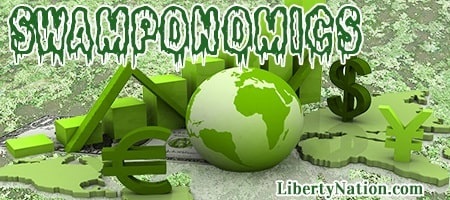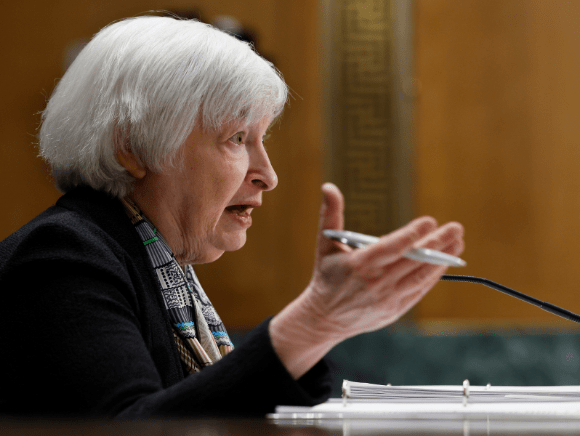The Federal Reserve will rerun the printing press in its quest to prevent a banking crisis similar to the 2008 financial meltdown. While critics will assert that the recent actions by the Eccles Building do not count as quantitative easing (QE), it is safe to say that the latest measures are, at the very least, the beginning of the central bank’s monetary policy pivot. The Fed has two choices: fight inflation and let the banking system collapse or allow inflation to run wild and save the banks. From the coronavirus pandemic to 40-year high inflation, can Chair Jerome Powell ever catch a break?
Federal Reserve Restarts QE
Something interesting happened on the way to winding down the Federal Reserve’s astronomical balance sheet. In the aftermath of the collapse of Silicon Valley Bank and Signature, the central bank and the US government announced a bailout package for insured and uninsured depositors and financial institutions facing trouble due to the market instability these entities caused. As a result, the Fed’s book rose at a substantial pace.
The institution’s balance sheet for the week ending March 15 spiked nearly $300 billion, increasing its balance sheet to $8.639 trillion, the highest level since November.
Over the past year, the Eccles Building has been unwinding its pandemic-era balance sheet by redeeming $95 billion worth of securities every month. This effort coincided with the dramatic drop-off in money-supply growth, which has contracted for two months for the first time on record.
Some will say that this expansion in the public ledger is not QE because the central bank has engaged in emergency lending. Indeed, the banks borrowed nearly $153 billion from the central bank in exchange for collateral, including Treasury bonds and mortgage-backed securities. Plus, the Fed has reduced its holdings of Treasurys by $7 billion and mortgage-backed securities by $2 billion.
But here’s the thing: Where does this money for the Bank Term Funding Program (BTFP) come from anyway? The Fed has been operating at a negative income since September. So, this is a softer form of QE. Plus, the financial markets should obtain a clearer picture of where the Fed is heading with this at the upcoming Federal Open Market Committee (FOMC). Will it raise rates, cut them, or hit the pause button? This might be the most critical FOMC powwow of the year.
Bailouts for Some
During Treasury Secretary Janet Yellen’s appearance before the Senate Finance Committee on Mar. 16, there was a riveting exchange with Sen. James Lankford (R-OK). The back-and-forth revealed two things that should boil the blood of liberals, conservatives, and libertarians.
The first is that Yellen admitted that foreign depositors at Silicon Valley Bank, which include Chinese investors and companies tied to the Chinese Communist Party (CCP), will be bailed out. “I suppose that could include foreign depositors,” she said. “I don’t believe there’s any legal basis to discriminate among uninsured.”
The second is that Yellen conceded that certain banks would receive special privileges that others would not. Lankford asked if every community bank would receive the same treatment as SVB. Yellen responded, “Banks only get the treatment if … the failure to protect uninsured depositors would create systemic risk.” Of course, the banks in the senator’s state are not as well connected to the Democrats as SVB may have been, so it is rather telling that regulators are bailing out executives, rich startups, and CCP-linked businesses.
Ultimately, the US government is picking winners and losers, which has been standard fare for the current administration. In the 2024 budget, the White House proposed abolishing billions in subsidies for oil and gas companies while handing out billions in subsidies to green energy. It is time to get the government out of the insurance business and encourage a market-based solution.

About That Recession
Goldman Sachs raised its recession odds to 35% in the wake of the banking crisis. The Atlanta Fed Bank GDPNow model estimate increased to 3.2% in the first quarter. The Conference Board’s Leading Economic Index (LEI) flashed red for the 11th consecutive month. So, what the heck is going on in the US economy? The recent influx of data offered a snapshot for February and March.
Last month, industrial production fell 0.2% year-over-year and was flat month-over-month. Manufacturing production contracted at an annualized rate of 1% and rose just 0.1%. Capacity utilization hovered around an 18-month low of 78%.
Of course, many eyes were focused on the two big readings: consumer sentiment and the LEI.
First, the University of Michigan Consumer Sentiment Index (CSI) plunged to 63.4 in March, down from 67 in February. The Consumer Expectations Index fell to 61.5, while the Current Conditions Index slumped to 66.4. The researchers stated that these indexes took into account the recent bank failures. In addition, the UMich data revealed that one- and five-year inflation expectations slowed to 3.8% and 2.8%, respectively.
Second, the CB’s LEI tumbled 0.3% in February, representing the 11th consecutive monthly drop. This monthly report, which did not include the SVB and Signature collapses, has moderated in recent months. However, the study noted that “the leading economic index still points to risk of recession in the US economy.”
“The most recent financial turmoil in the US banking sector is not reflected in the LEI data but could have a negative impact on the outlook if it persists,” CB added. “Overall, The Conference Board forecasts rising interest rates paired with declining consumer spending will most likely push the US economy into recession in the near term.”
If the economy does not slip into a recession before the 2024 presidential election, it could be one of the biggest shocks of the decade. This is even more stunning than Republicans insisting that there will not be one penny more for President Joe Biden’s “frizhnujobs.”




